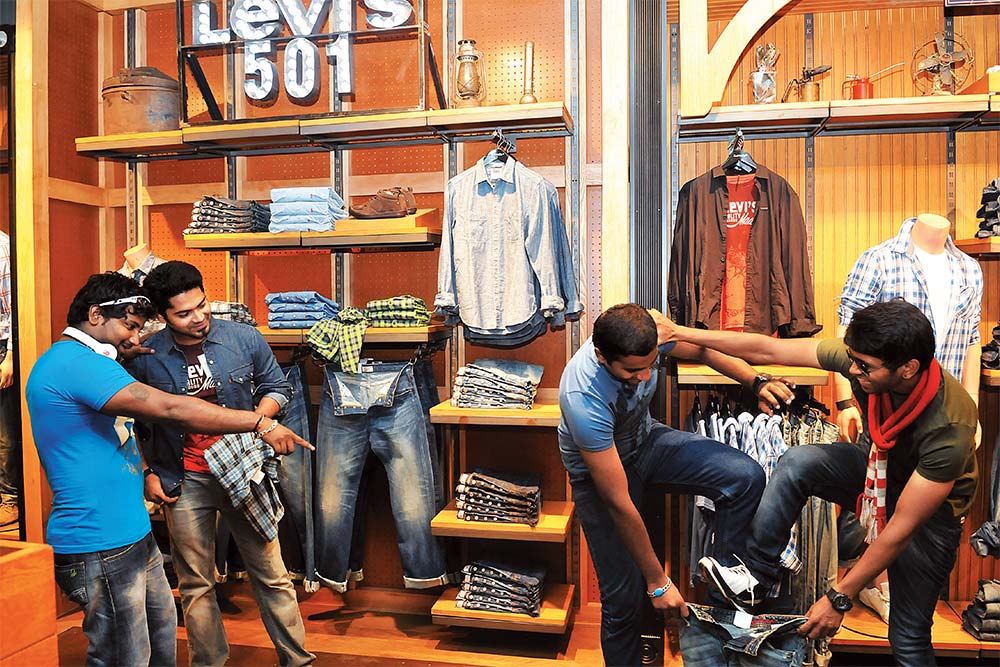“Your life is your life
don’t let it be clubbed into dank submission.
be on the watch.
there are ways out.”
Charles Bukowski’s haunting poem ‘The Laughing Heart’, featured in Levi’s ‘Go forth’ campaign, captured the imagination of young people around the world and in India when it was aired in mid-2011 — the poet’s voice was accompanied by visuals of kissing couples, serene sunsets and student protestors rioting in streets. Very soon, the ad was echoed by reality. Students rioted in the streets of Manchester and Birmingham, opposing law enforcers following the shooting of a London local, Mark Duggan. Levi’s withdrew the ad but, by then, it had already captured a slice of life as lived by the young. “To be young is to be free, to love, to be creative, to have the courage to stand for an ideal, and to rebel and break rules,” says Levi Strauss India managing director Sanjay Purohit.
Ever since Levi Strauss and Jacob Davis patented riveted clothing and founded the iconic company way back in 1873, the brand has come to be associated with the young. By the 1950s and 1960s in the US, the brand found steady followers in a range of youth subcultures, including the rugged and mean ‘Rockers’, the tight jeans-tight shirt-slick hair sporting ‘Greasers’, and the we-don’t-give-a-damn ‘Hippies’. Building on these associations, in more recent times, advertisements with celebs like Brad Pitt, and musicians from pop to punk rock genres like Marc Bolan, Percy Sledge and The Clash, have fortified the legend.
In India, apart from its global ads, the brand had celebs like Priyanka Chopra (Levi’s Diva), Akshay Kumar (Unbutton) and Deepika Padukone (Levi Fit) in ads that emphasise fashion, style, fitness, sex appeal and a youthful attitude. Levi’s also sponsored youth-based reality shows like Splitsvilla, ran music contests and supported forums like the Lakme Fashion Week, all of which further sealed the image of the cult jeans brand for young India.
Like anywhere else in the world, in India too, the key customer segment for Levi’s has never changed — young people between the ages of 15 and 34 years and, even more particularly, those within the ages of 20-30 years. “With Levi’s, the core of the brand is aimed at young people,” says Purohit. “As one grows older, one becomes more conformist and starts wearing formal clothes.” He adds that even the styling of Levi’s is for younger, fitter bodies. “For instance, the lowers are not baggy; they are form fitting,” Purohit says. “They accentuate fitness.”
Age premium
To sell to the young in India, Levi’s’ branding strategy rests on three prongs — aspiration, innovation and pricing. “Apparel is all about aspiration,” says Purohit. “The urban Indian youngster is as hip and cool as anywhere in the world.” The brand has also ensured that buyers have easy access. After 17 years in India, Levi’s has spread to 120 cities with 400 exclusive stores, 1,000 individual multi-brand stores as well as a presence in retail chains like Shoppers Stop and Pantaloons. The company has over 40% share of the ₹2,000 crore branded jeans market. It sells jackets, shirts, caps and other accessories, but denim constitutes 50% of the business.
In the premium category, Levi’s competes with brands like Zara, Mango, Diesel and 7. While many of these brands sell jeans and clothes at much higher price points, Purohit says that internationally too, these brands have not affected the positioning of Levi’s as a classic jeans brand. “A Mango or Zara is priced at the same levels in markets like Europe,” Purohit adds. “While fashion brands have definitely stirred up the market, consumers eventually come back where they see value. Take Levi’s Curve ID, for instance, cut for Indian women, who measure differently from their western counterparts.” Charul Sharma, a shopper at Levi’s Phoenix Mill store in Mumbai, agrees. “Levi’s is the only shop where they take my waist, hip and thigh measures to recommend a pair of jeans,” she says. “I always have to go in for alterations otherwise.”
Shripad Nadkarni, a brand expert who also wears Levi’s, does not see anything denting the its youth quotient. “If you see the latest two campaigns — ‘curve’ says it’s not about size but shape and ‘unbuttoned’ talks of losing restraint and going for one’s passion — they do understand the mindset of the young,” he says. “The danger will be when they stop tracking these changes.”
For now, Purohit expects the company to do even better. “Apparel is a sunrise industry and we are well positioned to rise with it,” he says. “We have the retail network, experience and the brand power.” He has it all worked out as long as young India keeps buying it.












 Just one email a week
Just one email a week